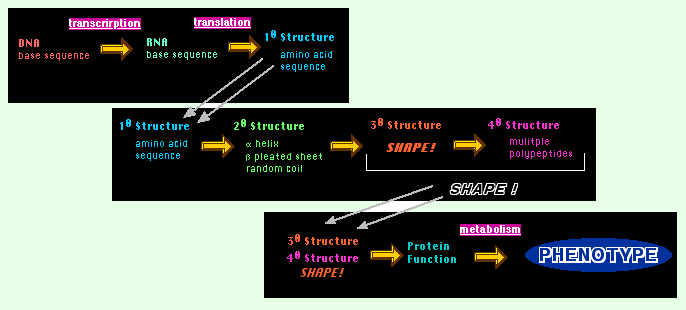
Click
on the image to see it full-size.
Click
here
to review the page
Click on the image to see it full-size.
Click here to review the page
Click
on the image to see it full-size.
Click
here
to review the page
|
Gene Mutation and Protein Variants |
REVIEW
 |
||
Click
on the image to see it full-size.
|
Click on the image to see it full-size. Click here to review the page |
Click
on the image to see it full-size.
|
.............. DNA is only a chemical - and it can be damaged easily. What
happens if the DNA molecule is damaged? Then
we would have a changed sequence!
| ORIGINAL SEQUENCE: | ATGCCATGAGATGCG | Wild Type Allele |
| CHANGED SEQUENCE: | ATGCCGTGAGATGCG | Mutant Allele |
So we can have 2
versions of the gene ......... these are called alleles
of
the gene. In this case we have the wild
type allele
(the "normal" version found in wild populations) and a mutant
allele
(the changed version).
.........
in fact we can have many mutant alleles
because a gene may be several hundred bases long ....... and any base can
be changed to any of 3 others!
| If a mutation occurs in the DNA of the gene what is the effect on the protein it codes for ? |
CLICK on the image to see it full-size. |
|
|
|
| RETURN to the Review Page |
Go to the top of the page.